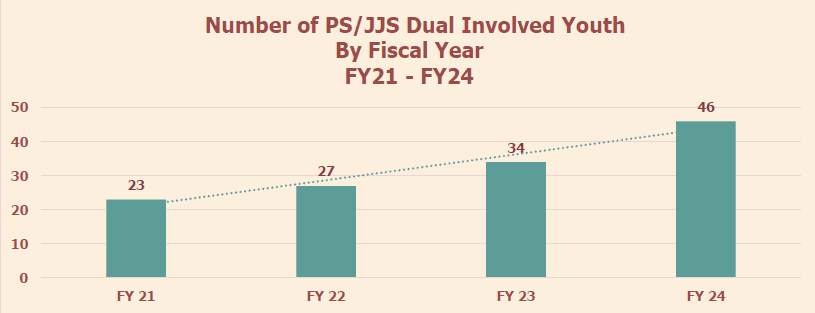Missing Pieces: A largely ignored blueprint? | 4 Investigates
ALBUQUERQUE, N.M. — What should we do with our state’s youngest criminals? It’s a question many leaders in New Mexico have different answers for.
Harsher consequences? Perhaps, more time spent behind bars?
One expert argues the state is missing the most important piece of the puzzle.
There are crimes that shock us to our core – many of them involving criminals who are just children – but we can only see parts of a much bigger picture related to troubled teens.
“We think of them as master criminals, monstrous individuals, but they’re not,” Dr. George Davis said. “The truth is they’re impulsive they’re dysregulated.”
Dr. George Davis spent decades working as a child psychiatrist. He spent many of those years working for the Juvenile Justice Division of the New Mexico Children Youth & Families Department.
Davis has boxes of information few other people have access to. That information went into a study published in 2016. While the research published in 2016 was based on 220 kids incarcerated in 2011, Davis expanded his study to include youth incarcerated from 2011 to 2018.
Davis said the unpublished study, comprised of more than 1,500 youth, mirrored his findings in 2016.
“I think the most shocking thing is how immense the load of trauma was in these delinquent kids,” he said. “It was stunning.”
Davis looked at ACEs – Adverse Childhood Experiences – and found almost every child in juvenile jail had a history of neglect. In fact, close to 8 in 10 children grew up in a household with substance abuse and more than 9 in 10 had a diagnosed substance use disorder.
Davis also discovered more than half of those children had prior contact with CYFD’s Protective Services Division. Of the female juveniles incarcerated, the research found some of them had an average of eight to nine referrals.
“I don’t know that we’ve talked specifically about the study because what’s in the study is what we all know,” said Kathey Phoenix-Doyle, the deputy CYFD secretary who works with the Family Services Division, focused on preventing abuse.
KOB 4 asked about research showing a history of physical and emotional neglect being present in 90% of juvenile delinquent offenders who are locked up.
“One of the areas we’re developing right now is our multi-level response, which is often called ‘Alternative Response.’ The reason I bring that up is, when you’re talking about neglect, what we’re doing is building a system where neglect cases may come in. Rather than an investigation, it shifts to a full family assessment,” Phoenix-Doyle said.
Phoenix-Doyle added that CYFD is making progress.
That’s despite new data showing the number of incarcerated kids, who are also involved in protective services, has doubled in the last four years.

“We’re looking to address, not only the delinquent behavior that happened but also what led to that behavior,” said Corey Adams, the deputy director of CYFD’s juvenile justice field services.
Adams said probation officers are working harder than ever to connect with kids in a more meaningful way.
“If that youth does not have any resources or doesn’t have somebody in their corner, that’s a huge red flag for us. Obviously, early substance abuse is. Truancy. If we’re seeing truancy, they are very likely to end up back in the office for a delinquent offense without some sort of intervention,” Adams said.
Dr. Davis agrees. He believes there is only one way to complete the juvenile justice picture in our state.
“People will say, ‘Well, if they’re damaged by early childhood abuse, then they’re still a public menace,’ and the fact is, a lot of that can be addressed,” Dr. Davis said. “I mean, the earlier you address it, the better. That’s why the reform that’s supposed to be going on at CYFD is so significant.”
It has been nine years since his study was published.
While CYFD said the report contains “what we all know,” child abuse prevention is still just 10% of the department’s overall budget. And our state’s repeat maltreatment rate is still among the highest in the nation.
“Missing Pieces” is a 4 Investigates series examining the evidence of a juvenile justice system once again under scrutiny. 4 Investigates is examining the problems in the system, the role that New Mexico’s Children Youth and Families Department is playing and meaningful solutions that have proven to work. Our goal is to be armed with knowledge as our lawmakers head to the Roundhouse in January.